The Cathay Pacific Group has reported a strong first half of the year as cargo revenue soared on the back of better yield and strong demand.
The Group’s cargo revenue in the first half of 2018 came in at HK$13 billion ($16 billion), a significant increase of 23.4 per cent compared to the same period in 2017.
Tonnage for Cathay Pacific Airways and Cathay Dragon combined grew faster than capacity and yield strengthened, reflecting increasing demand for specialist cargo shipments and the movement of higher value goods to and from Asia.
The cargo capacity of Cathay Pacific and Cathay Dragon increased by 4.1 per cent. The load factor increased by 2.1 percentage points, to 68.3 per cent. Tonnage carried increased by 7.5 per cent to one million tonnes. Yield increased by 16.3 per cent to HK$1.93.
Cathay said shipments from Hong Kong and Mainland China were stable and trans-shipments from the Indian subcontinent, Europe, Japan and Southeast Asia were strong.
E-commerce shipments from Asia also remained strong whilst exports of machinery and food from Europe and the Americas to Asia continued to grow, resulting in a more balanced trade flow. The Group carried cargo to and from more places in Europe in line with the expansion of its passenger network in Europe.
In the Group’s interim report for the first six months of the year, chairman John Slosar said: “Our cargo business was strong, with growth in both volume and yield. We benefited from a weak US dollar during the early part of the period, but were adversely affected by significantly increased fuel prices.”
The Group’s overall results improved despite fuel prices soaring 31 per cent as it recorded an operating profit of HK$697 million ($88.8 million) for the first half of 2018, compared with an operating loss of HK$1.7 billion in the same period last year.
The group reduced its loss attributable to the shareholders to HK$263 million, compared to the HK$2.1 billion for the same period in 2017. Total revenues increased 15.7 per cent to HK$53.1 billion.
In the first half of 2018, Cathay increased freighter frequencies to Chennai from six times weekly to daily, while its Mumbai route went from twice to three times weekly in June 2018 and it stopped a service to Calgary in March. It said additional capacity will be added to key routes in America during second half of 2018 to cope with seasonal demand.
In June, Cathay received the first of 20 new Airbus A350-1000 aircraft, a larger version of the Airbus A350-900 aircraft already in the fleet. It will be used on the new belly service being introduced to Washington D.C. in September and on other long-haul belly routes.
As for the future, Slosar said: “Our airlines usually perform better in the second half of the year than in the first half of the year. We expect this to be the case in 2018. The strength of the US dollar and economic uncertainty arising from global trade concerns remain challenges.
“But we still expect passenger yields to continue to improve and the cargo business to remain strong. Fuel prices are expected to be higher. Hedging losses will reduce but net fuel costs will increase. Our new aircraft will improve fuel efficiency and we expect to generate more ancillary revenue.
“Our transformation programme will continue. We believe that we are on track to achieve our objective of achieving sustainable long-term performance for our airline businesses. There is still much to do, but I am confident in our future.”



